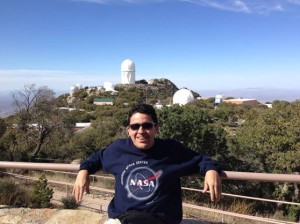 With the announcement of a series of sequels, now is a great time to discuss the scientific viability of the Avatar world.
With the announcement of a series of sequels, now is a great time to discuss the scientific viability of the Avatar world.
Jorge Zuluaga, an astronomer at Colombia’s Universidad de Antioquia, wants to emphasize the “fiction” in science fiction.
In his Academic Minute, Dr. Zuluaga discusses the physical viability of Pandora, a moon set in the fictional universe of the Avatar films – a topic that has been engendered much discussion.
Jorge I. Zuluaga is a Colombian astronomer based on Medellín, Antioquia. He is the founder and head of the Undergraduate Program in Astronomy at the University of Antioquia. His fields of research have ranged from the emission of neutrinos in supernovas to the habitability of extrasolar planets.
He is married and has 3 children, Andrés, Daniel and Sofía. Enjoy writing and reading about any topic in science and sometimes in philosophy. His relationship with science is almost as strong and lasting as his passion for communicating and popularizing physics and astronomy. He runs a weekly blog in Spanish [Trinoceronte] where he adds the missing 1,000+ words of his short reflections on Twitter.
An asteroid has his name (347940) Jorgezuluaga, or more accurately, his mom put him the future name of an asteroid.
Jorge Zuluaga – Debunking “Pandora”
Five years ago we were amazed with the images of an extraterrestrial world covered by jungles, seas and floating mountains. It was Pandora, the habitable moon of the movie Avatar.
But, is it any chance that a real Pandora exists out there?

Beside the creative license of superconducting mountains floating in the magnetic field of the moon and its host planet, the chances for a real Pandora are much lower than we may have originally thought.
Although planetary scientists are almost convinced that there exist a plethora of small worlds floating around giant planets in other planetary systems, the truth is that the environment of these worlds will probably be extremely complex and potentially hostile to life
Let’s start with tides. Living in the close realms of a gargantuan planet, almost 10 times the size of Jupiter is not a piece of cake. Powerful tidal forces squish the moon while it travels around the planet. As a result, the internal friction in the moon releases an incredible amount heat that can melt the rock and make the otherwise beautiful place, a volcanic inferno.
The heat released by the planet and the stellar light reflected from its surface, will also be a matter of concern. In some cases they will be so intense that it will be like living with two stars. This is true while no eclipses occur.
Nobody knows how cold the long night inside the shadow of the giant, could really be.
If all these threats were not enough, we have discovered the “drop that spilled the cup”: the magnetic environment of an extant Pandora could be a dangerous place to live. And we are not talking about finding your way with a compass. If enshrouded by the magnetic field of its host planet a real Pandora could be subject to a powerful influx of high energy particles able first, to erode its atmosphere leaving a naked moon, and second, sterilize its surface on a blink of an eye.

But not everything is bad: if you think that northern lights is a beautiful display, these moons would be bright in the darkness of the planet’s shadow while still being bombarded by magnetospheric particles – a dangerous spectacle to witness.
So, the next time you think on the extraterrestrial lands of science fiction, and the wonderful richness of wildlife and interplanetary conflicts remember that our beautiful Universe cannot disobey its natural laws and there are also awful and dangerous secrets to discover.
Read More: Magnetic Shielding of Exomoons Beyond the Circumplanetary Habitable Edge
